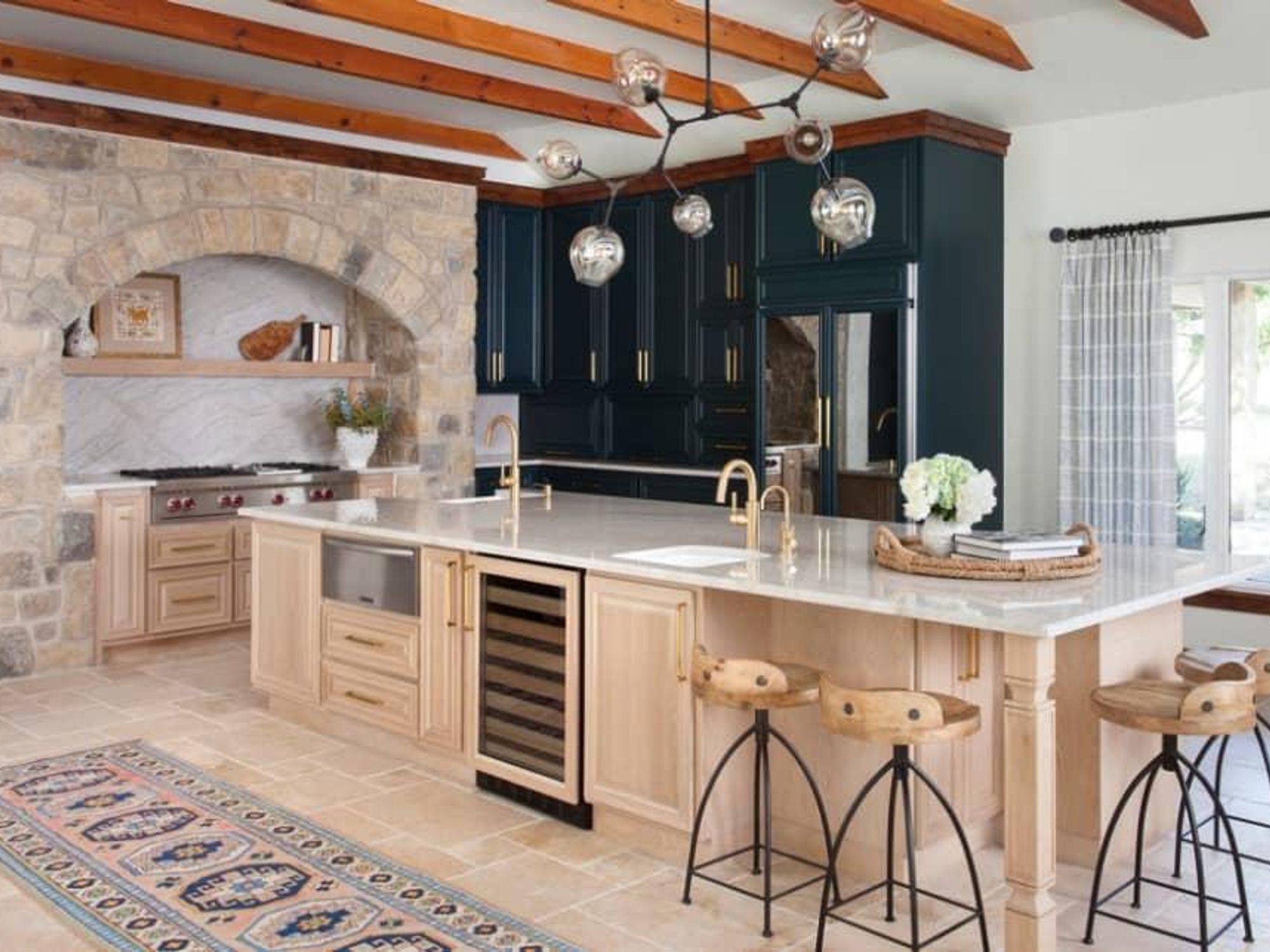With the Bandd
Austin designer expertly explains how to mix wood tones when decorating

With the help of HGTV, Pinterest, and blogs, people are feeling more confident than ever when it comes to decorating their homes. But nothing can replace the expertise of a professional interior designer — and we've all got questions.
Bandd Design is here to answer them. The Austin-based company, founded by Sara Malek Barney, believes design should be effortless, approachable, interesting, and purposeful.
The team handles everything from full-scale redesigns to concepts and consultations, and often dispenses valuable advice to their loyal fans.
One recent question involves a tricky design dilemma: Is it okay to mix wood tones? And how do you do it successfully?
"We're constantly being asked this — we actually recommend mixing different wood tones because using the same tone everywhere can make the space look really bare," says Barney. "Adding in various wood tones can add beautiful layers and contrast into a space. But to achieve that natural, effortless look, you have to know how to mix wood tones the right way."
Undertones
Each type of wood can be categorized as having either warm or cool undertones. Warm undertones include hints of yellow, orange, and red, while cool undertones are closer to blue, green, black, and gray.
When mixing woods, you'll want them to all have the same undertones — all warm or all cool. This will help make the room feel cohesive and blend together rather than being overwhelming.
Pro tip: Get samples of the woods that you're considering using in your space and compare the undertones next to each other before getting started. Place the samples in the room and see how they look together in different types of lighting, such as during the day and at night.
Pick a dominant wood
Choose a dominant wood tone to serve as the base for the entire room. The dominant wood is either the flooring, the cabinetry, or the largest piece of furniture in the space.
Based off the dominant wood, select accent woods that complement it and bring in some contrast and layers. If you want to make more of a statement, choose a light and dark wood. For a more blended and subtle look, incorporate light, medium, and dark wood.
Keep natural variations in mind
Since wood is a natural element, there are usually natural variations in the grain. Keep that in mind when selecting your wood types so that the grains don't make the room feel busy.
We suggest going with a white oak or maple as one of your selections, as these wood types tend to have more subtle variations and a cleaner look.
Create contrast
It's important that you don’t let the various wood tones overwhelm the room. Create some contrast and balance by incorporating pieces that are made of different materials.
For instance, if you're mixing wood tones in a living room, add in a metal coffee table, a sofa with a cozy fabric, and an area rug to help break up the look of the space. If you're mixing wood tones in a kitchen or bathroom, use backsplash tiles and matte hardware to serve as contrasting pieces.
---
Have your own questions for Bandd Design, or want a consultation? Reach out to them here.